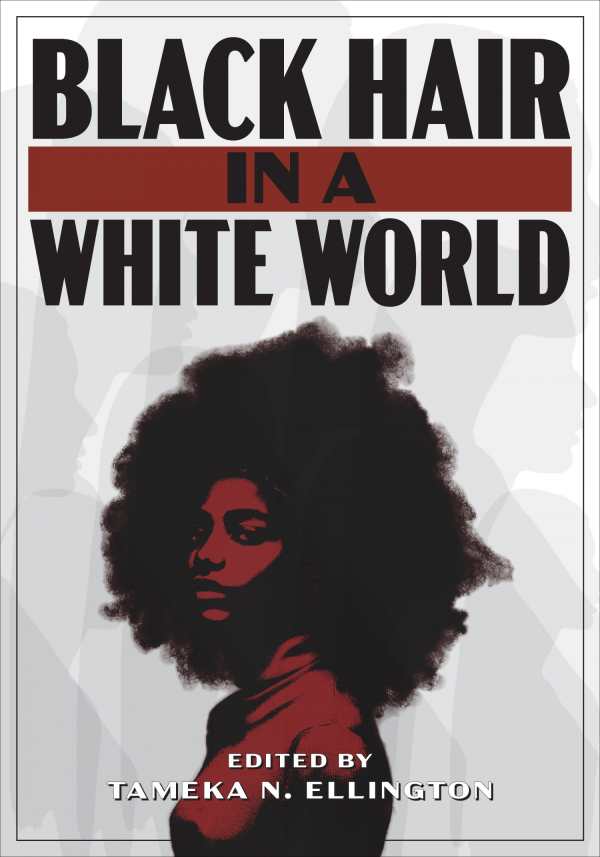Black Hair in a White World
The essays of Black Hair in a White World concern the struggles of Black women who sport natural hair in a colonized world.
A commodity, a means of discrimination, a point of economic exploitation: Black women’s hair developed in public and personal perception since the abolition of slavery. Once dismissed as dirty and unprofessional, natural Black hairstyles faced discrimination in the workplace, schools, and in popular media. Texturism is seldom given academic or legal attention despite the political, historical, and personal importance of hairstyles like the Afro, a symbol of revolution in the 1960s. Through the history of Black hair in America, this collection addresses critical race theory, Black feminism, racial profiling, and media studies to embolden a world wherein Blackness is seen as beautiful and is appreciated.
Popular history and empirical studies are centered, with notes that Black women are often pressured to straighten their hair, leading to burns, lesions, and even alopecia, and that ignorance about the resultant psychological and physical damage perpetuates colorism. Time periods are addressed in terms of their approach to Black activism and pride. And poetry, social media, visuals of Black beauty product advertisements, and symposium participants are presented to describe Black acculturation.
These studies bring to light how Black hair has been a symbol of revolution and change on social and personal levels. Some points are hammered home by the end, while others, as with those related to intersectionality, are just mentioned. Anachronisms (as with the idea that locs were a result of the transatlantic slave trade) are disproven, and the economic classism of the Black hair product industry is described in detail. Noting that Black-owned companies and hairstyles need support to thrive, the book issues a call for action alongside its investigations.
Black Hair in a White World is about radical self-acceptance in the form of natural Black hair.
Reviewed by
Ali Ortiz
Disclosure: This article is not an endorsement, but a review. The publisher of this book provided free copies of the book to have their book reviewed by a professional reviewer. No fee was paid by the publisher for this review. Foreword Reviews only recommends books that we love. Foreword Magazine, Inc. is disclosing this in accordance with the Federal Trade Commission’s 16 CFR, Part 255.

